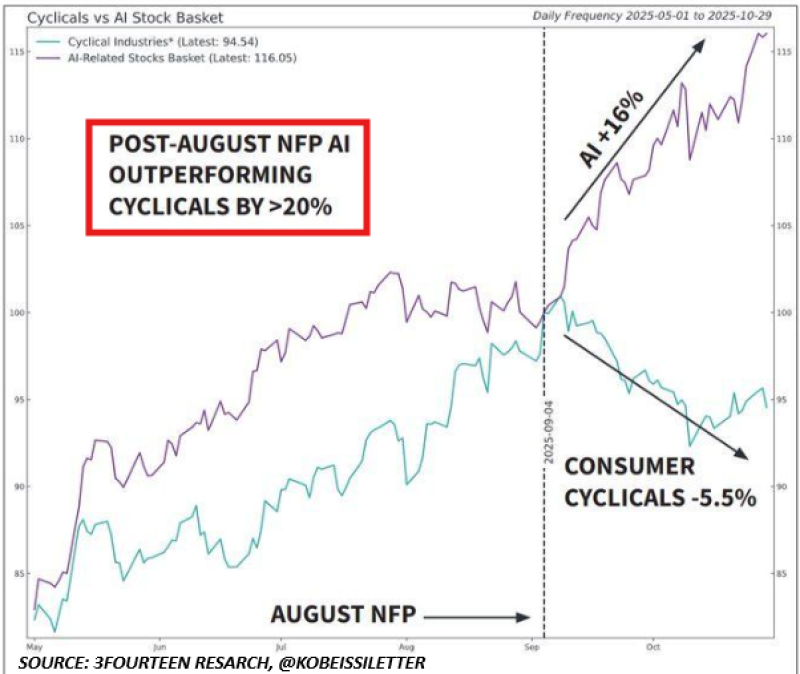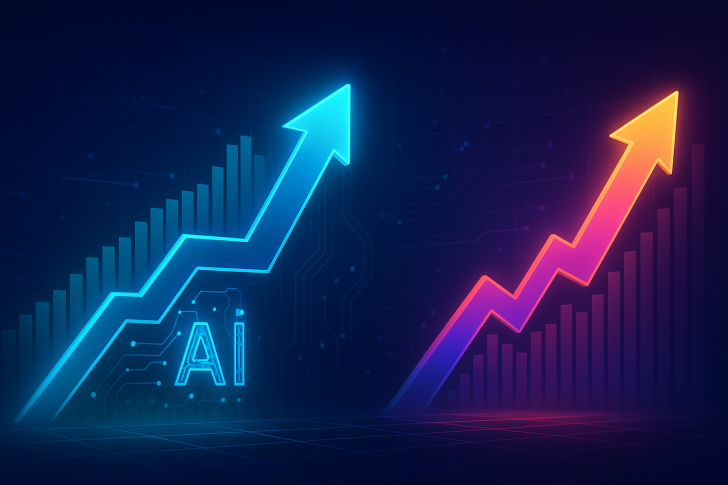● According to recent analysis from KobeissiLetter, there's a striking split happening in U.S. markets: AI stocks have outpaced consumer cyclicals by over 20% since August's jobs report, based on 3Fourteen Research data. The chart shows AI equities up roughly 15%, while consumer cyclicals fell 5.5% during the same stretch — a gap that reveals a deepening economic divide.

● The real story isn't about inflation or interest rates anymore. It's about an accelerating split between the AI-powered capital economy and the consumer sector that depends on middle-class spending. While annual AI investment tops $1 trillion, household finances are cracking — car repos are back at 2009 crisis levels. This contrast highlights a major risk: AI companies are driving market gains while consumer businesses face headwinds, creating a two-tier economy that could amplify financial and social divides.
● The data shows Wall Street money is flooding into AI infrastructure and chips, leaving consumer-facing industries behind. There's a new "AI premium" reshaping which sectors lead growth. As one analyst put it: "There are two U.S. economies: rich vs. poor — and AI is the lifeline of it all." But that lifeline could become a breaking point if household debt and delinquencies keep climbing, weakening the real economy that drives long-term spending.
● This shift reflects a fundamental change in how economic power works. Consumer industries used to signal economic health, but now AI is the main driver of valuation and productivity, led by giants like Nvidia, Microsoft, and OpenAI. The tradeoff? Less inclusive growth. As consumer sectors fall behind, the gap shows how wealth creation is increasingly tied to owning technology rather than broad consumer demand.
 Peter Smith
Peter Smith

 Peter Smith
Peter Smith


